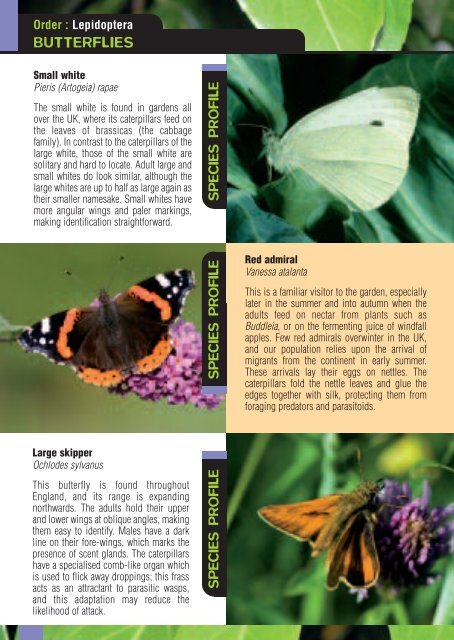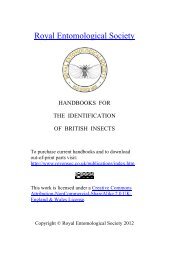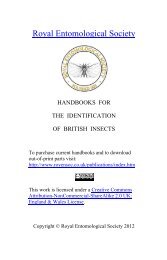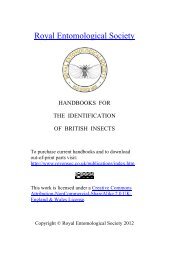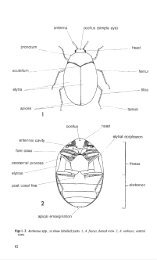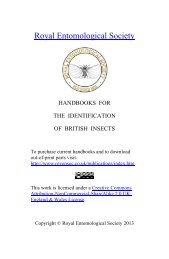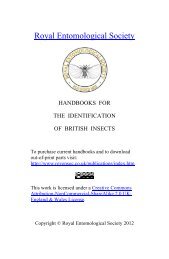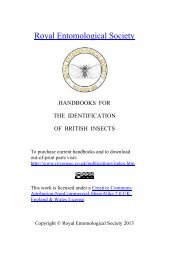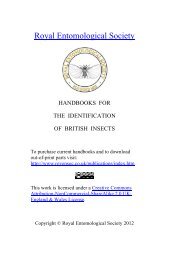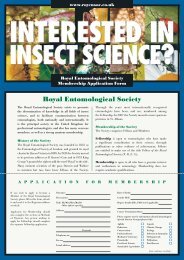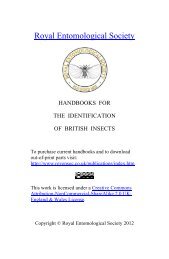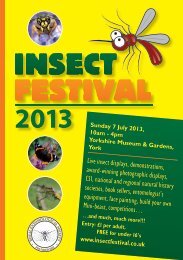Garden Entomology - Royal Entomological Society
Garden Entomology - Royal Entomological Society
Garden Entomology - Royal Entomological Society
Create successful ePaper yourself
Turn your PDF publications into a flip-book with our unique Google optimized e-Paper software.
Order : Lepidoptera<br />
BUTTERFLIES<br />
Small white<br />
Pieris (Artogeia) rapae<br />
The small white is found in gardens all<br />
over the UK, where its caterpillars feed on<br />
the leaves of brassicas (the cabbage<br />
family). In contrast to the caterpillars of the<br />
large white, those of the small white are<br />
solitary and hard to locate. Adult large and<br />
small whites do look similar, although the<br />
large whites are up to half as large again as<br />
their smaller namesake. Small whites have<br />
more angular wings and paler markings,<br />
making identification straightforward.<br />
Large skipper<br />
Ochlodes sylvanus<br />
This butterfly is found throughout<br />
England, and its range is expanding<br />
northwards. The adults hold their upper<br />
and lower wings at oblique angles, making<br />
them easy to identify. Males have a dark<br />
line on their fore-wings, which marks the<br />
presence of scent glands. The caterpillars<br />
have a specialised comb-like organ which<br />
is used to flick away droppings; this frass<br />
acts as an attractant to parasitic wasps,<br />
and this adaptation may reduce the<br />
likelihood of attack.<br />
SPECIES PROFILE<br />
SPECIES PROFILE<br />
SPECIES PROFILE<br />
Red admiral<br />
Vanessa atalanta<br />
This is a familiar visitor to the garden, especially<br />
later in the summer and into autumn when the<br />
adults feed on nectar from plants such as<br />
Buddleia, or on the fermenting juice of windfall<br />
apples. Few red admirals overwinter in the UK,<br />
and our population relies upon the arrival of<br />
migrants from the continent in early summer.<br />
These arrivals lay their eggs on nettles. The<br />
caterpillars fold the nettle leaves and glue the<br />
edges together with silk, protecting them from<br />
foraging predators and parasitoids.


